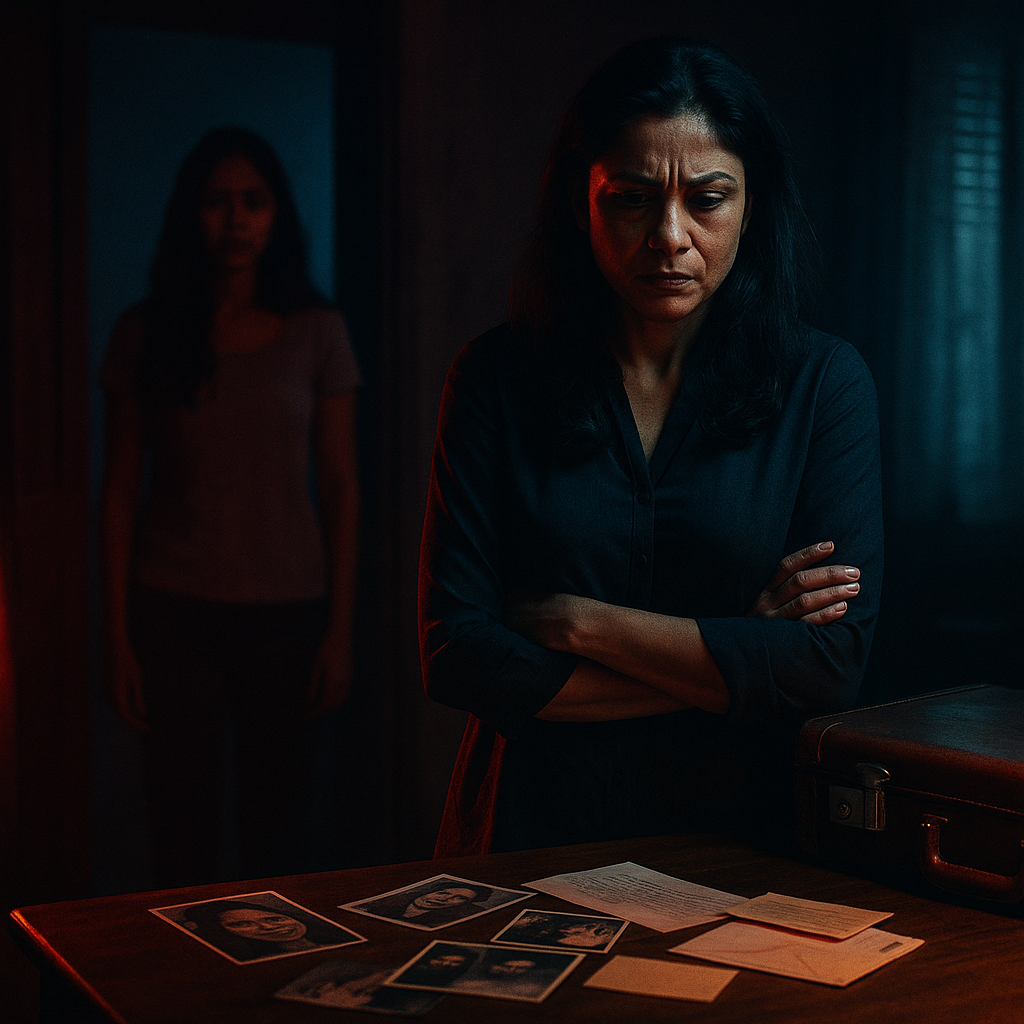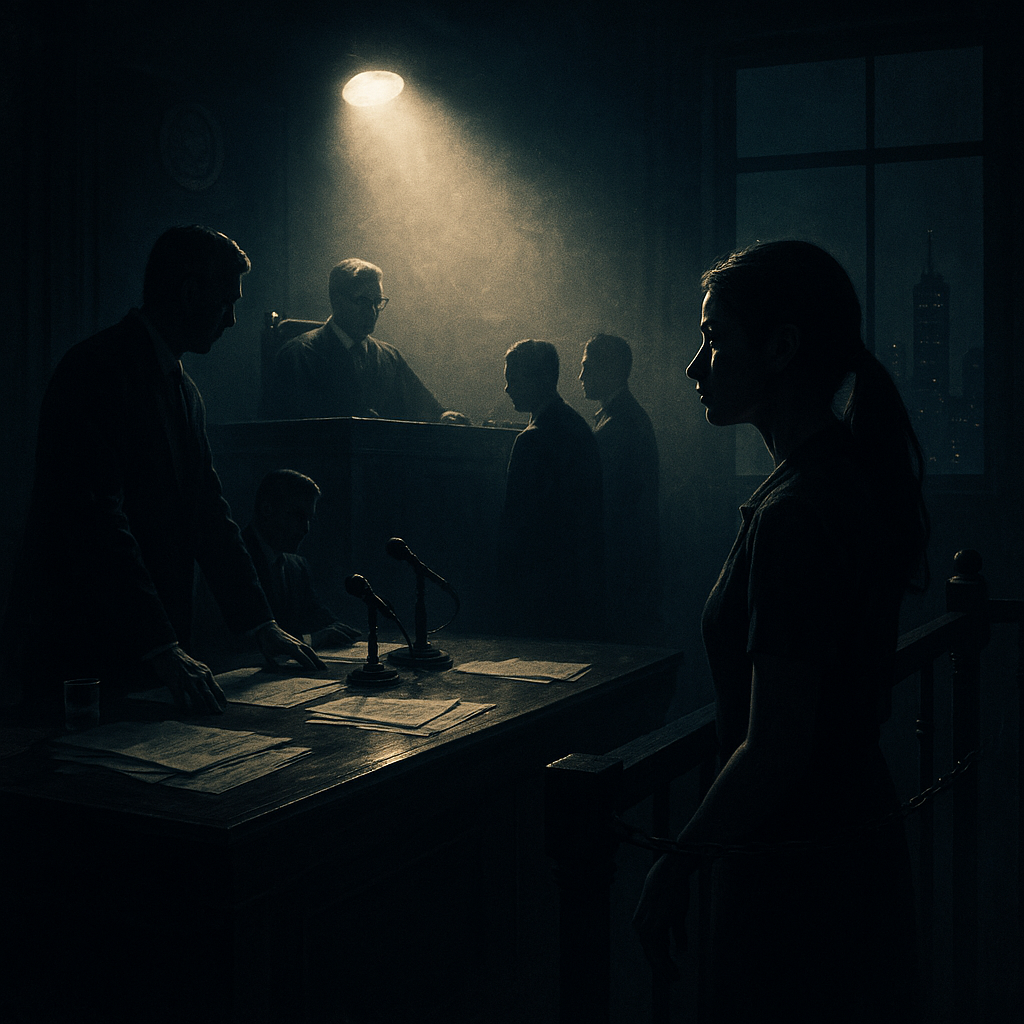The Sheena Bora murder case is one of India’s most sensational true crime stories, involving high society secrets, hidden relationships, and a murder that stunned the nation. Set against the backdrop of media moguls and Mumbai’s elite, this case captured public imagination with its shocking twists. Here’s a deep dive into the events, key players, and ongoing legal drama.
Who Was Sheena Bora?
Promising Future Cut Short
Sheena Bora was a 24-year-old working with Mumbai Metro One when she suddenly disappeared in April 2012. Smart, ambitious, and reportedly in a relationship with Rahul Mukerjea—son of TV executive Peter Mukerjea—Sheena seemed to have a bright future ahead.
Secret Daughter, Not Sister
What wasn’t known publicly at the time was her real identity. Sheena was not the sister of Indrani Mukerjea—as Indrani claimed—but her biological daughter from a previous relationship. This falsehood would become a key element in the case.
The Murder – April 24, 2012

Chilling Execution
According to police investigations, Sheena was lured into a car by her mother Indrani, Indrani’s ex-husband Sanjeev Khanna, and driver Shyamvar Rai. Inside the car, Sheena was reportedly drugged and strangled.
Disposing the Body
The body was kept in a suitcase overnight. The next day, the accused allegedly drove to a forest in Raigad district and burnt the body to destroy evidence. For three years, no one knew she had been murdered.
The Case Breaks – 2015
A Driver’s Confession
The case reopened when police arrested Shyamvar Rai in an unrelated arms case. During questioning, he confessed to his involvement in Sheena’s murder and implicated Indrani and Sanjeev.
Arrests and Public Shock
Indrani Mukerjea was arrested in August 2015, followed by Sanjeev Khanna and later Peter Mukerjea. The case made headlines with daily updates, shocking revelations, and speculation about motive.
Motive Behind the Murder
A Tangled Web of Love, Power, and Reputation
The motive behind the Sheena Bora murder is complex, layered with personal ambitions, family secrets, and fierce attempts to maintain control over social image and wealth. At the heart of the case lies a dark narrative of a mother desperate to hide a secret that could destroy her carefully constructed life.
Protecting a Carefully Crafted Identity
Indrani Mukerjea was not just a mother but also a powerful media executive married into Mumbai’s elite. Publicly, Sheena Bora was presented as Indrani’s younger sister rather than her daughter—a secret Indrani went to great lengths to maintain. This lie was central to Indrani’s social identity and professional reputation. The revelation of Sheena’s true relationship with Indrani threatened to expose the deception, potentially ruining her standing in high society and business circles.
This desperate need to protect her false identity created an environment rife with tension and fear. Indrani allegedly saw Sheena’s growing independence and her relationship with Rahul Mukerjea (son of Indrani’s husband Peter Mukerjea) as threats to her carefully maintained facade.
Love, Control, and Jealousy
Sheena’s romantic relationship with Rahul Mukerjea added another volatile dimension. Indrani reportedly disapproved of their relationship, fearing it could unravel family secrets or jeopardize the family’s reputation. Some reports suggest that Indrani feared losing control over Rahul and Sheena’s futures, especially with questions about inheritance and social standing looming large.
This dynamic of love entangled with control, jealousy, and power struggles within the family is a critical piece in understanding the motive. The murder can be seen as an extreme act to silence Sheena and prevent the truth from surfacing.
Financial Gain and Inheritance
Money was another significant factor. The Mukerjea family was wealthy, with considerable stakes in the media industry and real estate. Sheena’s existence as Indrani’s daughter complicated inheritance issues and control over assets. Some theories suggest that eliminating Sheena was also about ensuring that Indrani and her allies could secure financial advantages without challenge.
A Web of Lies and Deception
Indrani reportedly went to extraordinary lengths to cover up the murder, including impersonating Sheena online, sending emails in her name, and telling colleagues that Sheena was studying abroad. This elaborate deception not only delayed the discovery of the crime but also points to a deep motive rooted in maintaining appearances at any cost.
Psychological Pressure and Social Stigma
In Indian society, family honor and reputation are often valued above all else. The fear of scandal—especially one involving a mother-daughter relationship turned deadly—can exert immense psychological pressure. The shame and stigma attached to family secrets could have driven Indrani to extreme measures.
Summary: A Murder Fueled by Secrets and Survival
Ultimately, the motive behind Sheena Bora’s murder appears to be a tangled mix of personal betrayal, desperate attempts to preserve social status, jealousy over love, and the pursuit of financial security. It is a tragic example of how dark family secrets, when combined with ambition and fear, can lead to devastating consequences.
The Investigation Timeline
Key Events
- April 2012: Sheena goes missing.
- August 2015: Shyamvar Rai arrested and confesses.
- 2015–2017: Indrani, Sanjeev, and Peter arrested.
- 2017: CBI files chargesheets.
- 2022: Indrani granted bail.
- 2025: Trial continues.
Inside the Courtroom

Complex Legal Battle
The courtroom proceedings in the Sheena Bora murder case have been anything but straightforward. Since the trial began, it has been mired in complexities that have stretched the case over a decade. Legal hurdles such as bail applications, repeated adjournments, procedural errors, and appeals have significantly slowed down the trial’s progress. The accused—Indrani Mukerjea, Sanjeev Khanna, and Peter Mukerjea—have each taken different legal approaches, leading to fragmented proceedings and delays in witness examination.
Compounding these challenges were frequent health-related delays. Indrani was hospitalized multiple times, citing medical emergencies, which forced the court to adjourn hearings. Peter Mukerjea, too, sought bail on medical grounds. In addition, the COVID-19 pandemic brought the entire Indian judiciary to a halt, further pushing the timeline.
To date, over 180 witnesses are listed by the prosecution. These include forensic experts, digital analysts, police officers, Sheena’s colleagues, and even family friends. Courtrooms have echoed with tense testimonies—some supporting the prosecution’s timeline, others poking holes in the narrative. Each witness appearance became a media event, intensifying public intrigue.
CBI’s Role
The Central Bureau of Investigation (CBI) took over the case from the Mumbai Police in late 2015. Their involvement added credibility and national importance, as they brought with them enhanced forensic capabilities and cross-border investigative power. The CBI’s chargesheet detailed the chilling sequence of events, the alleged planning, and the cover-up. They submitted crucial evidence including:
- Call data records (CDRs) showing communication patterns between the accused before and after the murder.
- Testimony of Shyamvar Rai, the driver who became the key approver and described in detail the execution of the crime.
- Forensic analysis of the partial remains found in the Raigad forest.
- Bank transactions and financial documents to hint at monetary motives.
The agency also faced criticism. Defense lawyers repeatedly challenged the authenticity of the confessions and the timeline provided by CBI. Allegations of forced testimonies and mishandled forensic evidence became points of contention. However, despite these hurdles, the CBI has stood by its claim that this was a premeditated murder orchestrated by Indrani Mukerjea to preserve her reputation and consolidate control over family assets.
Witness Drama and Courtroom Tensions
Several dramatic moments unfolded in the courtroom. Witnesses turned hostile, family members broke down during cross-examinations, and verbal exchanges between lawyers became heated. At times, Indrani took on an assertive role—challenging statements, whispering legal advice to her lawyers, and often displaying what many described as a ‘cold’ demeanor.
The trial also highlighted deeper issues within India’s judicial system: case backlogs, under-resourced courts, and the immense influence wielded by the wealthy in manipulating delays. While the courtroom proceedings were slow, they were never short of drama—making it clear why the case captured and held national attention for so long.
Media Frenzy and Public Interest
A National Obsession
The Indian public followed the Sheena Bora murder case with a level of fascination typically reserved for blockbuster movies. As details emerged—wealth, betrayal, secret identities, and an upper-crust murder—media outlets raced to cover every twist and turn. From prime-time debates to breaking news segments, the case dominated television screens, social media timelines, and newspaper headlines. Journalists camped outside courtrooms, followed suspects, and dissected evidence live on air. It became a national obsession, especially because it broke the mold of traditional crime—unfolding not in the shadows of poverty or desperation, but among Mumbai’s media elite.
24/7 Media Cycle and Sensationalism
While the constant coverage helped keep the case in public memory, it also gave rise to sensationalism. Some news channels turned speculative theories into headlines. Panel discussions frequently blurred the line between journalism and entertainment. Questions were raised about trial by media and the impact of such intense scrutiny on judicial fairness. Yet, there was no denying the public’s appetite for information. The more dramatic the update, the more viral the coverage.
Global Attention and Cultural Impact
The case also garnered international attention, especially after streaming platforms like Netflix entered the scene. Documentaries and podcasts transformed the courtroom narrative into digestible content for global audiences. The 2024 Netflix documentary “The Indrani Mukerjea Story: Buried Truth” not only reignited interest in India but introduced the story to a worldwide audience. The chilling nature of a mother accused of killing her daughter resonated universally, creating comparisons to other infamous family crimes globally.
A Mirror to Society
Ultimately, the media coverage did more than just inform—it reflected societal fascinations and fears. The public wasn’t just hooked on the crime; they were grappling with what it revealed about ambition, identity, and the invisible cracks in seemingly perfect lives. In that sense, the media frenzy was not just about voyeurism, but a collective confrontation with uncomfortable truths.
Inspired Dramatizations
The case inspired books, podcasts, and documentaries. A 2024 Netflix documentary titled “The Indrani Mukerjea Story: Buried Truth” added further interest globally.
Where Are They Now?
Indrani Mukerjea
After being granted bail in 2022, Indrani Mukerjea reentered public life with a mix of boldness and controversy. She began writing a memoir detailing her version of events and has given a series of televised interviews where she continues to deny any involvement in her daughter’s murder. Her public appearances have been met with skepticism, with critics accusing her of manipulating media narratives to reshape her public image. Despite the ongoing legal proceedings, Indrani has shown no signs of retreating into anonymity. Instead, she seems to be actively working on reclaiming a space in the public eye—something that both intrigues and disturbs observers.
Peter Mukerjea and Sanjeev Khanna
Peter Mukerjea, once a towering figure in Indian television, has largely disappeared from the public radar after securing bail. He has refrained from public commentary and maintains a low profile, reportedly residing in Mumbai and occasionally traveling for medical or legal reasons. Meanwhile, Sanjeev Khanna remains in judicial custody. He has reportedly cooperated with authorities during some phases of the investigation, though his legal team continues to argue for his innocence. Unlike Peter, Sanjeev has not attracted media attention and remains a shadowy figure in the narrative.
Rahul Mukerjea
Rahul Mukerjea—Sheena’s boyfriend and Peter’s son—has perhaps faced the deepest emotional fallout. Known to have tried filing a missing persons report in 2012, Rahul’s persistence was one of the few early signs that something was amiss. Since the case broke, Rahul has deliberately stayed out of the spotlight, reportedly grappling with depression, anxiety, and trust issues. Sources close to him suggest that he has cut ties with many family members and leads a reclusive life, avoiding media and public engagement altogether. His role in the story is not just of a grieving partner, but also of someone who may have witnessed firsthand the chilling intersection of love, betrayal, and criminal cover-up.
Unanswered Questions
Will Justice Be Served?
This question looms large over the Sheena Bora murder case, even years after the initial arrests. Despite multiple chargesheets, detailed confessions, and mountains of circumstantial evidence, no final conviction has been secured. Critics argue that the slow-moving Indian legal system—bogged down by procedural delays, health issues of the accused, and overburdened courts—risks denying justice through attrition. Each adjournment adds to public skepticism, and with time, key witnesses could become unavailable or their memories unreliable. For Sheena’s friends, family, and the general public, the wait for closure continues to be emotionally draining.
What’s the Truth?
While the legal process seeks facts, the Sheena Bora case remains steeped in mystery and contradiction. Was Sheena killed solely to cover up a secret relationship? Was property or financial inheritance a deeper motive? And who among the accused played what exact role? Even after years of legal proceedings, clear answers remain elusive. The driver, Shyamvar Rai, provided a graphic confession, but his statements have been challenged. Indrani maintains her innocence, and Peter Mukerjea denies any knowledge. Without irrefutable forensic evidence or a cohesive timeline accepted by all parties, the case remains partly unresolved—leaving space for both speculation and doubt.
Could This Happen Again?
Unfortunately, the elements that allowed this crime—secrecy, manipulation, and social stigma—still exist. The case shines a harsh spotlight on how deeply dysfunctional family dynamics, when combined with social pressure and unchecked power, can escalate to violence. It also underlines the need for stronger systems to report and investigate disappearances swiftly, even in seemingly well-off families.
Why Did No One Report Her Missing?
Perhaps the most chilling question of all—why didn’t anyone raise an alarm when Sheena vanished? The answer reveals not just a criminal lapse but a societal one. Indrani’s claim that Sheena went to the U.S. for studies was accepted without skepticism. Rahul Mukerjea tried to file a missing person report but allegedly received little police support. The silence around Sheena’s disappearance speaks volumes about how easy it is to erase someone when those closest are complicit—or apathetic.
Conclusion – A Tragedy Beyond Crime
The Real Victim
At the heart of this sensational case is a young woman who lost her life too soon. Sheena Bora’s death exposed the fragility of trust and the cost of hidden truths.
Lessons for Society
This case reflects not just a criminal tragedy but also a cultural one—where appearances, ambition, and secrets collided fatally.
Q&A – Common Questions
Is the case still open?
Yes, the Sheena Bora murder case remains an ongoing legal proceeding as of 2025. Although significant developments such as arrests, bail grants, and chargesheets have occurred, the final judgment is still pending. The trial continues in the special CBI court, where over 180 witnesses are expected to be examined. Legal delays, health concerns of the accused, and procedural complexities have all contributed to the slow pace of the case.
Why did it take three years to discover Sheena’s murder?
Sheena’s murder went unnoticed for three years because Indrani Mukerjea, her mother and alleged murderer, told friends, family, and colleagues that Sheena had left for higher studies in the United States. She even went as far as impersonating Sheena through emails and messages to convince others that she was alive. Additionally, no formal missing person complaint was lodged by anyone close to Sheena, which further delayed police intervention. This calculated manipulation effectively erased Sheena’s presence from public memory—until a surprising confession reopened the case.
What triggered the investigation?
The investigation was accidentally triggered in 2015 when Shyamvar Rai, Indrani’s former driver, was arrested in an unrelated illegal arms case. During police questioning, he unexpectedly revealed his involvement in Sheena’s murder. His detailed confession not only outlined how the murder was executed but also named Indrani and her ex-husband Sanjeev Khanna as co-conspirators. This confession led to the recovery of key evidence and launched a full-scale investigation by the Mumbai Police and later, the Central Bureau of Investigation (CBI).


